Hi ! We hope this site helps you! ٩(ˊᗜˋ*)و As an Amazon Associate, we earn from qualifying purchases without additional cost. Click to read more about our Privacy Policy or Affiliate Disclosure
This is the latest version of our Hiragana guide, if you like the old version better, you can use this link here:• (Archived) Hiragana Guide Part 1
In your journey to learn Japanese, you will encounter 3 types of Japanese writing. The most important and the first you need to master is Hiragana. But don’t fret! Our guide will help you to master Hiragana in no time! はじめましょう!
Before you start
Our guide use mnemonics to help you memorize all characters. Think of it as a text/image reference. As a reference, you don’t have to follow it 100%. And as you will notice. Not all mnemonics fit the character perfectly and that is fine. As long as it helps to create a connection to the new character, it will help you to memorize it much easier!
Be sure to listen to each audio sound to hear the correct spelling! ヾ(@°▽°@)ノ
Use these links to navigate between columns easily:
• Vowels [a, i, u, e, o]
• K Column [ka, ki, ku, ke, ko]
• S Column [sa, shi*, su, se, so]
• T Column [ta, chi*, tsu*, te, to]
• N Column [na, ni, nu, ne, no]
• H Column [ha, hi, fu*, he, ho]
• M Column [ma, mi, mu, me, mo]
• R Column [ra, ri, ru, re, ro]
• Others [ya, yu, yo, wa, wo, n]
• Tips to differentiate similar hiragana shape
• Quick Summary
Hiragana Chart Part 1
Don’t worry! (๑•̀ㅂ•́)و✧
Part 2 is just about sound combinations, no more new stuff to remember!
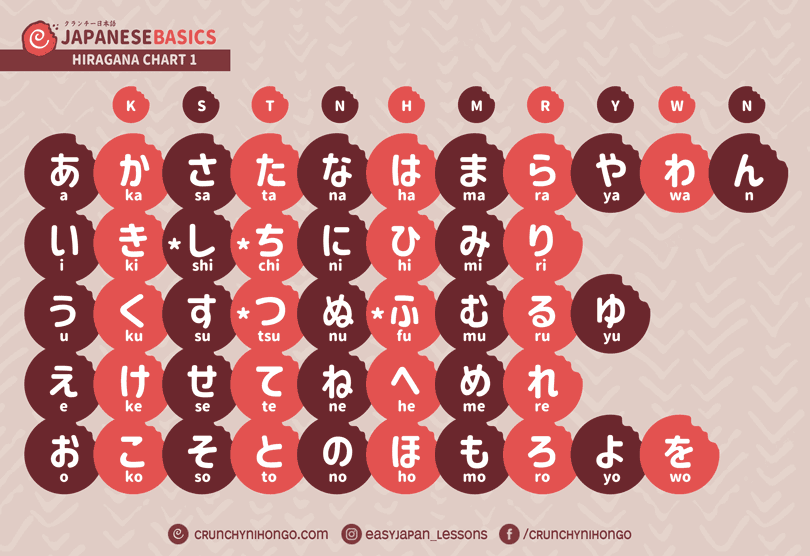
Vowels [a, i, u, e, o]
First and foremost! The Japanese version of ABCDE is their vowels! Don’t forget to check the corresponding audio sounds for each Hiragana characters.
Hiragana Vowels Mnemonics
あ [a] – The Singing Girl
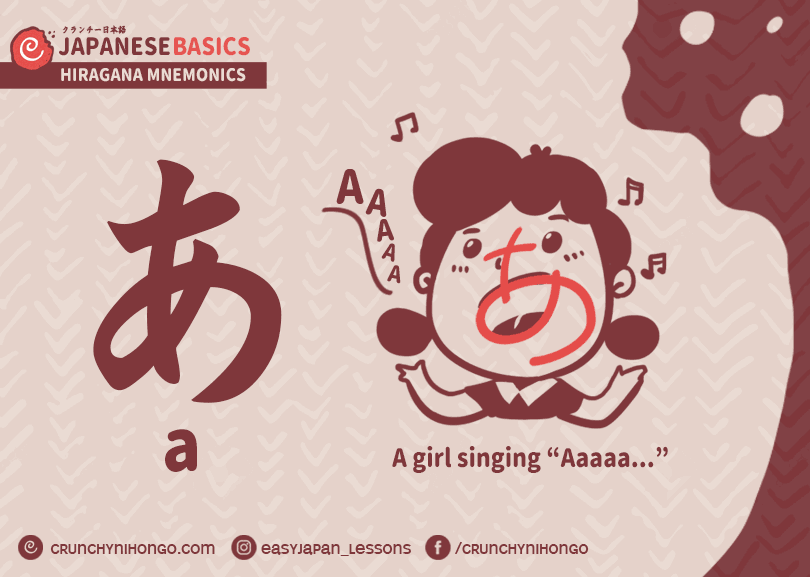
い [i] – Letter “i”

う [u] – The Letter “U”
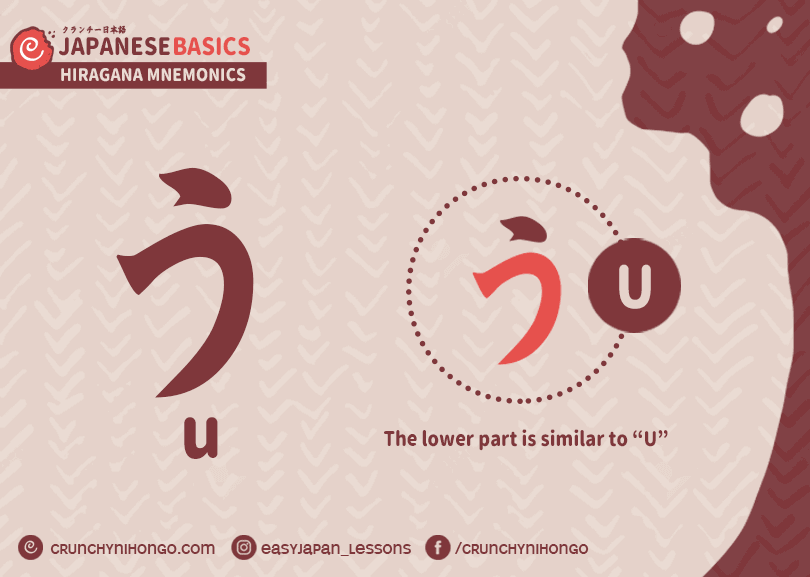
え [e] – “3” Equals Letter “E”
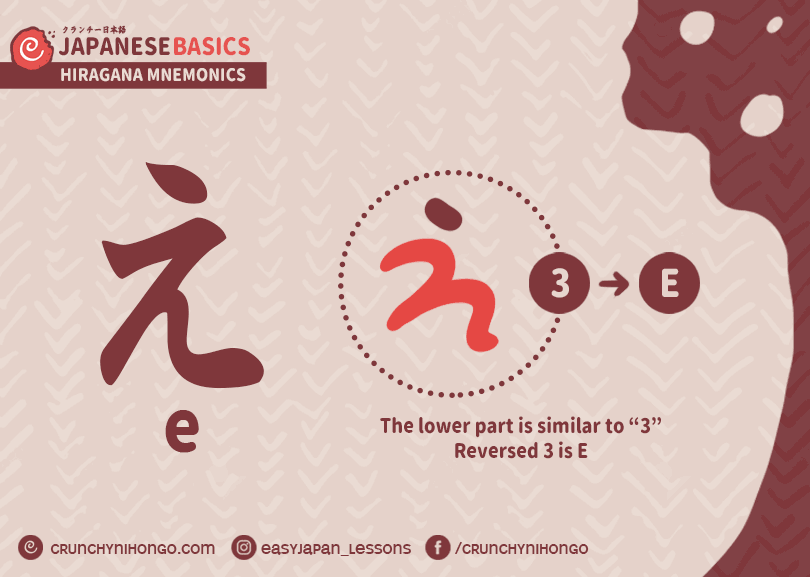
お [o] – A Crying Boy
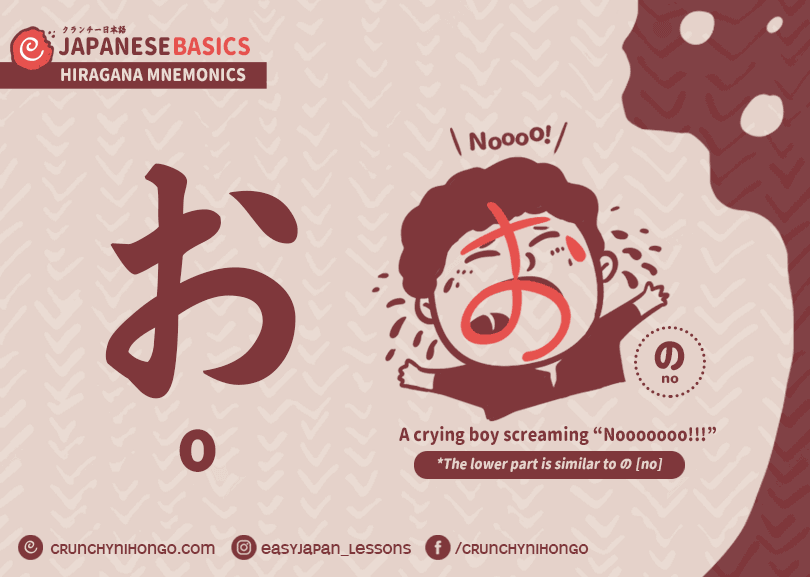
Navigation links:
Chart | Vowels | K Column | S Column | T Column | N Column | H Column | M Column |
R Column | Others
K Column [ka, ki, ku, ke, ko]
We continue the characters according to the Hiragana chart. This is the K Column. Nothing unusual here. Just letter K followed with vowels. Can you see now why the vowels are so important?
Hiragana K Column Mnemonics
か [ka] – A Vintage Camera

き [ki] – The Key to it All
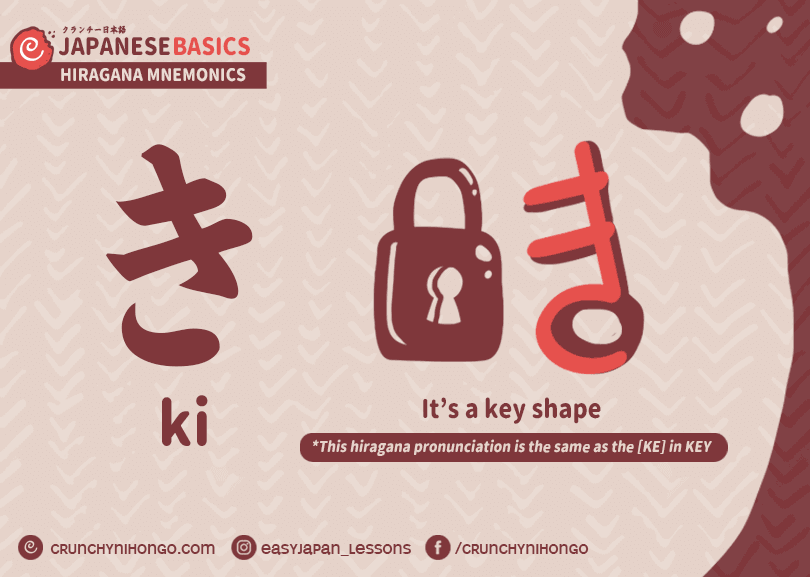
く [ku] – The Duck with a Big Mouth

け [ke] – Just an Ordinary Kettle
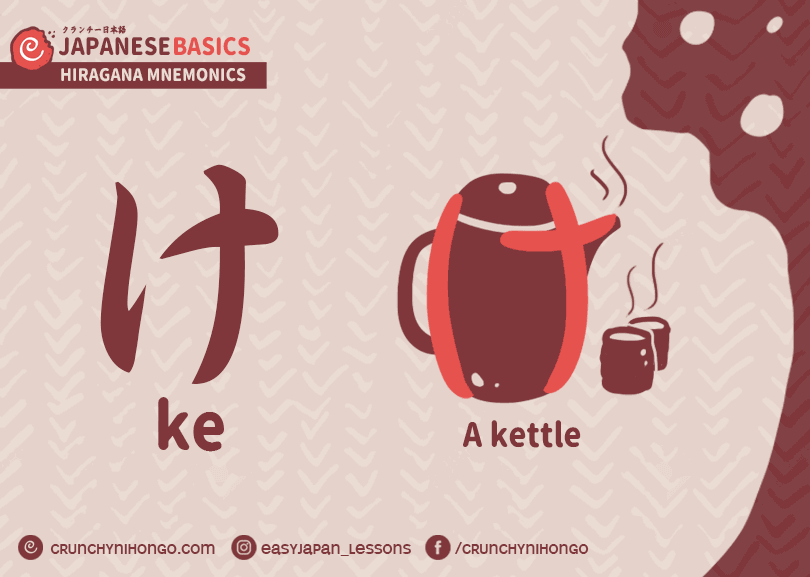
こ [ko] – A Dancing Cobra
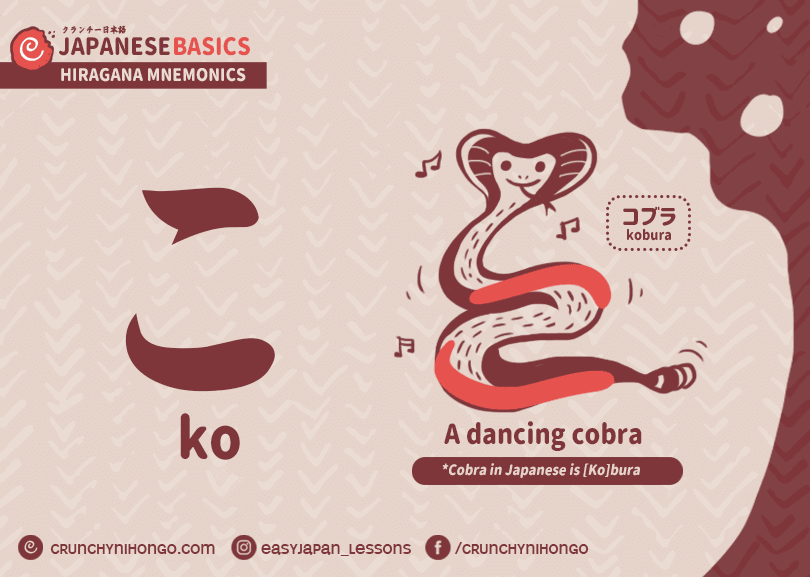
Navigation links:
Chart | Vowels | K Column | S Column | T Column | N Column | H Column | M Column |
R Column | Others
S Column [sa, shi*, su, se, so]
Now we are starting to see the irregulars! You might’ve anticipated for [sa, si , su, se, so]. But notice that it’s not si . It’s し [shi] instead. So the correct one is [sa, shi ,su, se ,so] There are a few more irregulars. But don’t worry, they aren’t as hard as English vocabulary irregulars!
Hiragana S Column Mnemonics
さ [sa] – The Little Sardine

し [shi] – She is All I want
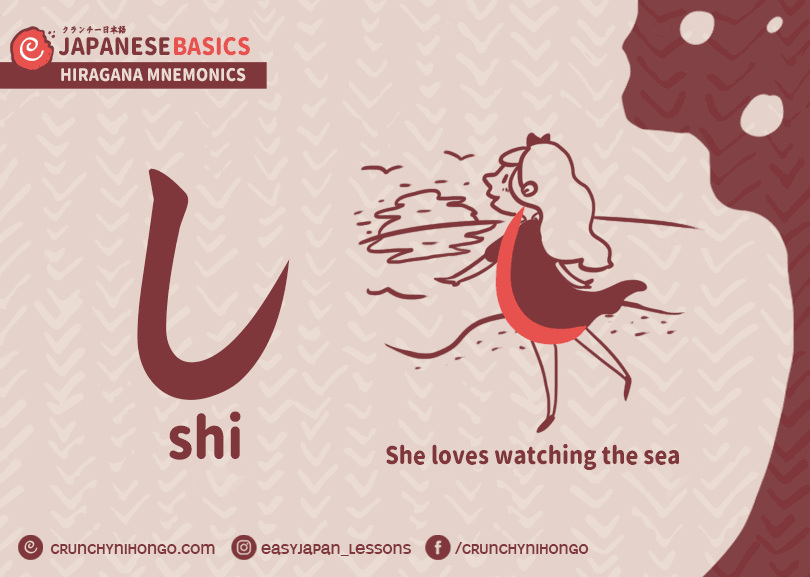
す [su] – Smoking is Bad for Health

せ [se] – Lucky Number Seven
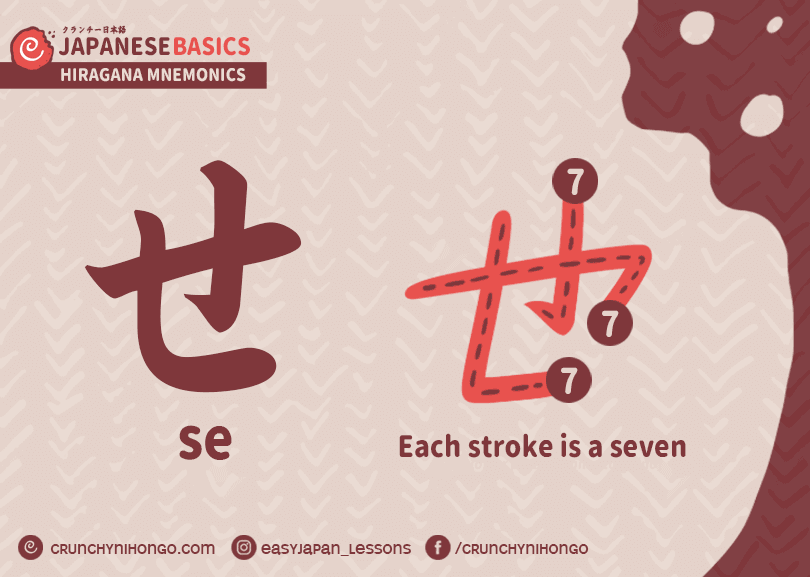
そ [so] – The Wandering Soul

Navigation links:
Chart | Vowels | K Column | S Column | T Column | N Column | H Column | M Column |
R Column | Others
T Column [ta, chi*, tsu*, te, to]
This time there are 2 irregulars. Instead of ti , we have ち [chi]. And つ [tsu] instead of tu.
Sometimes, you will encounter small つ [tsu], as in まって , this means that you need to double the consonant of next kana. Therefore it’s read as matte and not matsute .
More examples are:
きって [kitte], きっぷ [kippu], あさって [asatte], and もっと [motto].
Hiragana T Column Mnemonics
た [ta] – The Wooden Table
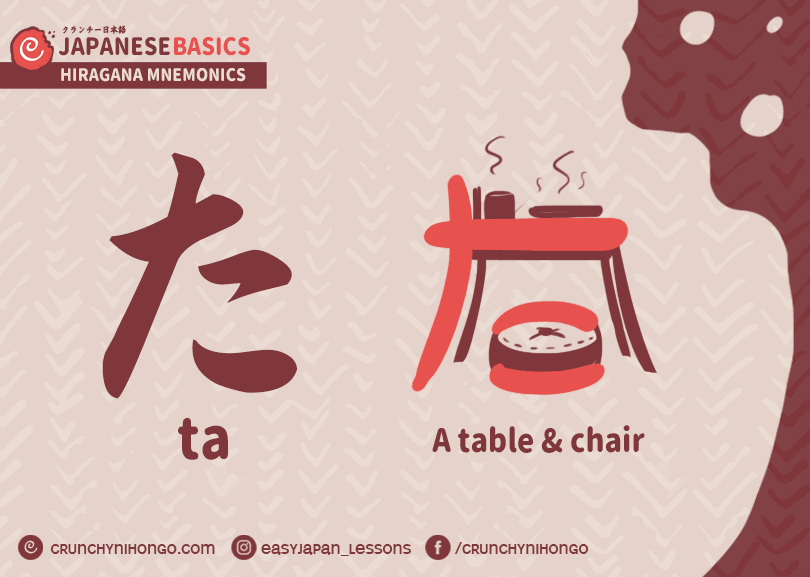
ち [chi] – 5 Citrus Fruits
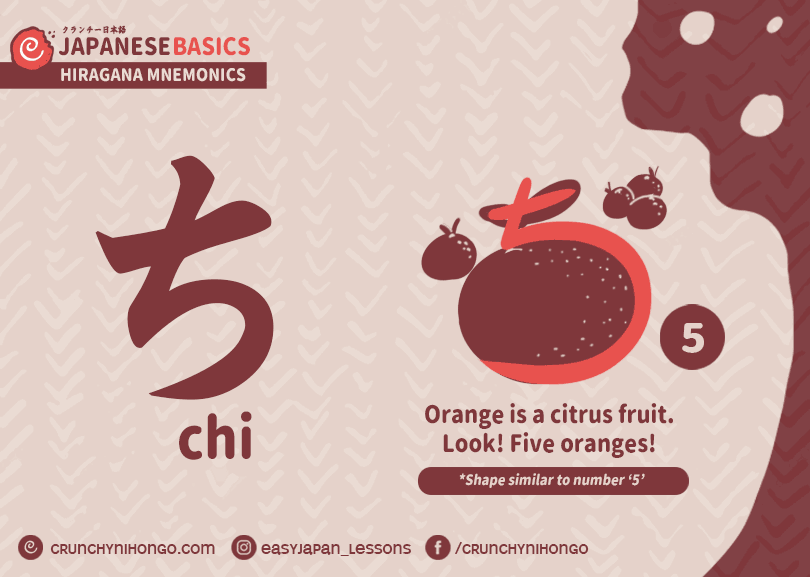
つ [tsu] – Surfing the Ocean
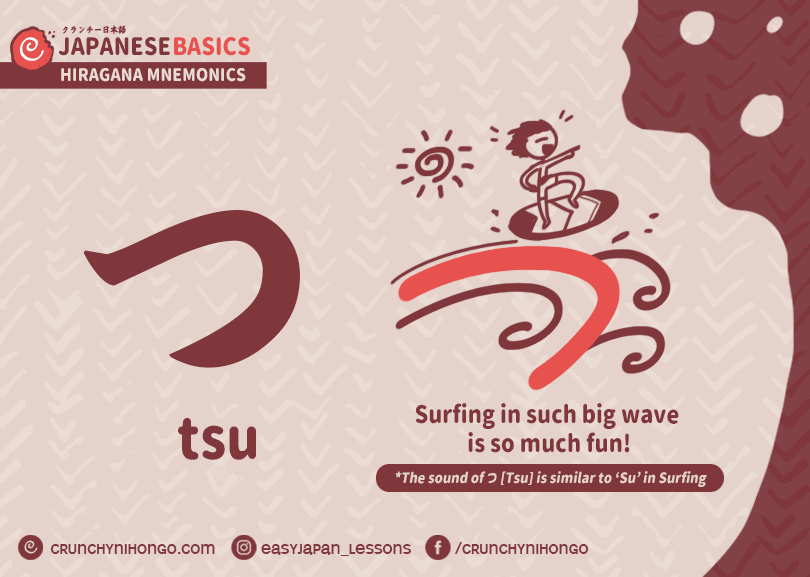
て [te] – Telephone
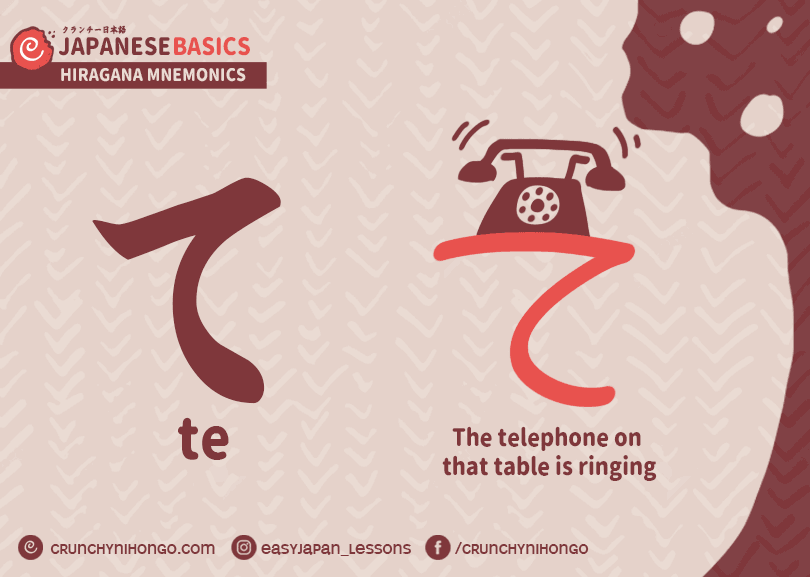
と [to] – Tomatoes
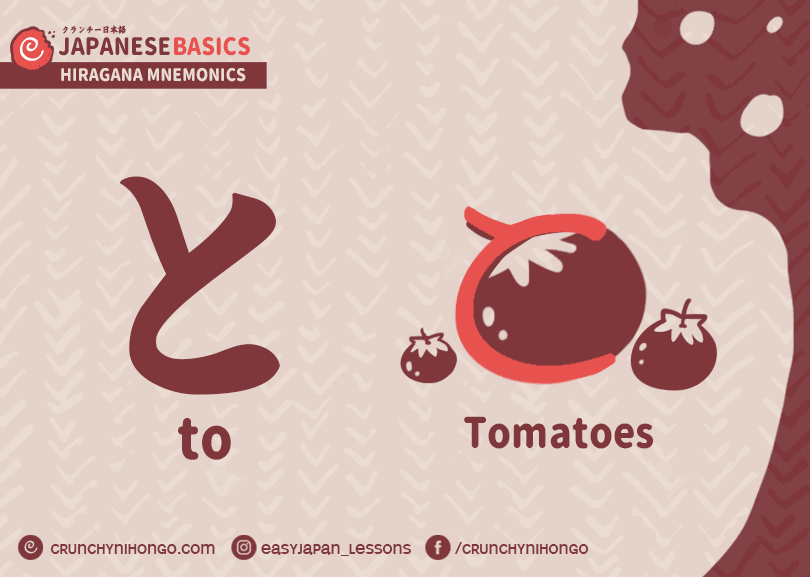
Navigation links:
Chart | Vowels | K Column | S Column | T Column | N Column | H Column | M Column |
R Column | Others
N Column [na, ni, nu, ne, no]
Just an ordinary Column with N combined with vowels!
Hiragana N Column Mnemonics
な [na] – The Nail and Hammer
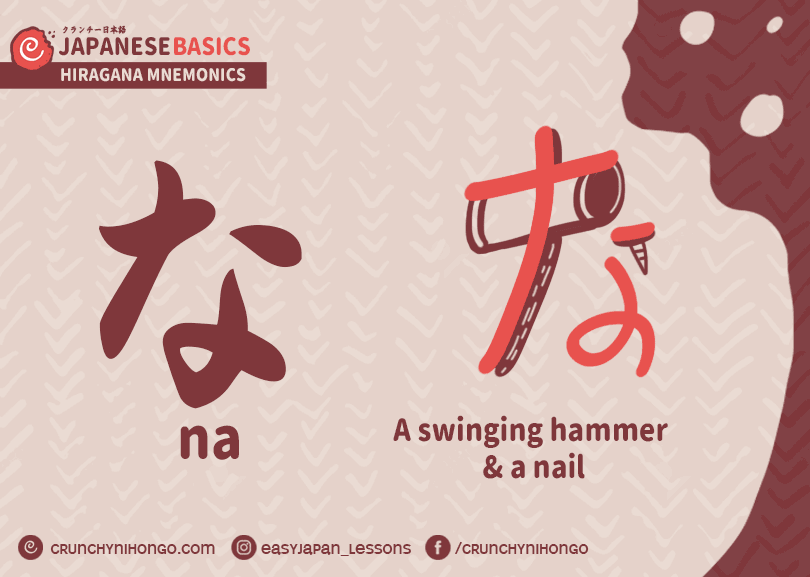
に [ni] – The Nippon Flag
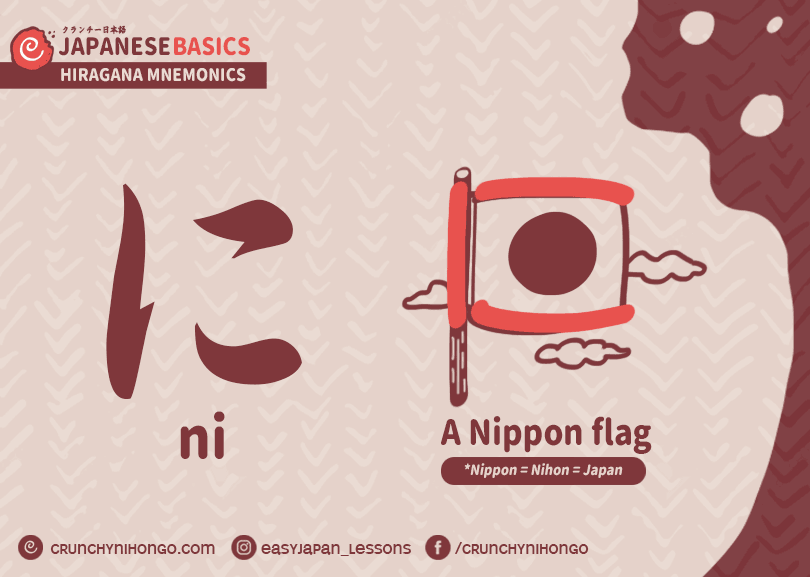
ぬ [nu] – A Yummy Noodles

ね [ne] – The Snake’s Neck
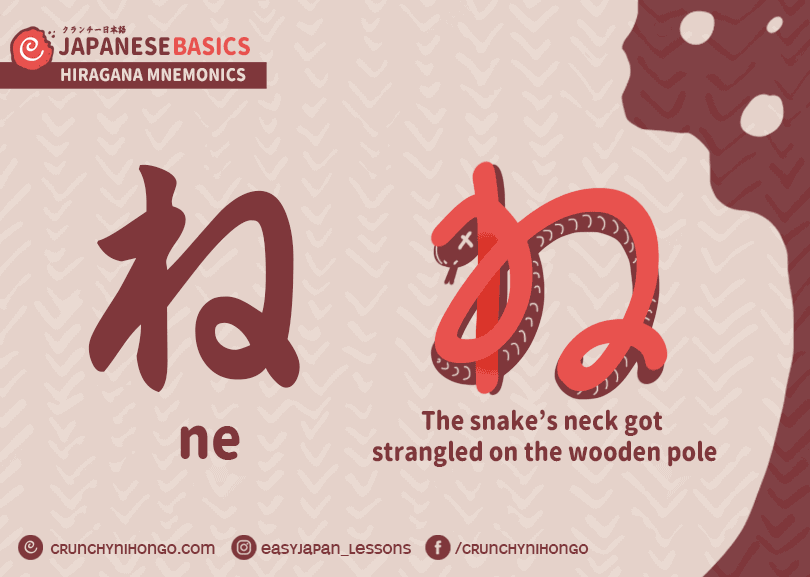
の [no] – No Smoking!
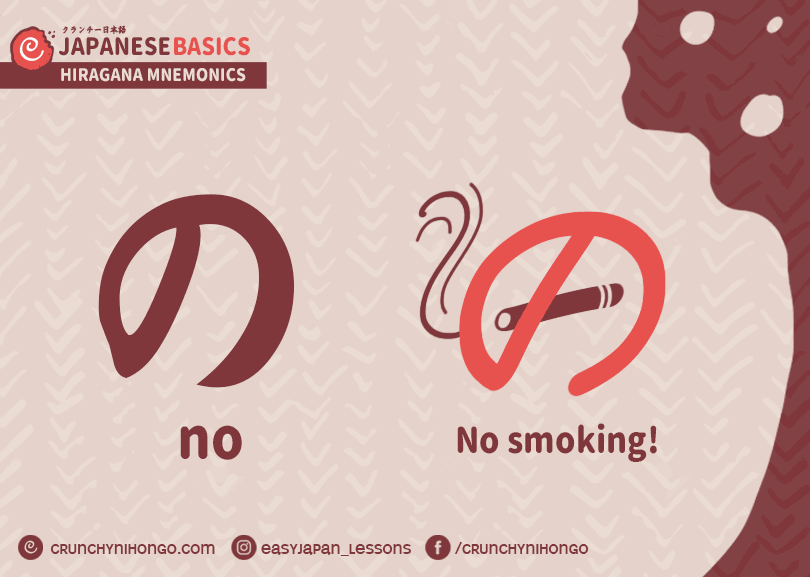
Navigation links:
Chart | Vowels | K Column | S Column | T Column | N Column | H Column | M Column |
R Column | Others
H Column [ha, hi, fu*, he, ho]
Just one irregular this time. There’s no hu in Japanese. Just remember the Great Fuji Mountain and you’ll easily remember ふ [fu].
Notes:
When you encounter は [ha] as a particle and not a part of a vocabulary/word. It will be read similarly as わ [wa]. “But how can I differentiate them”, you asked? Usually, it will not be accompanied by another characters. And as your vocabulary and Japanese knowledge expand, you will recognize it almost immediately.
Hiragana H Column Mnemonics
は [ha] – Ha, Ha, Ha! *laugh*
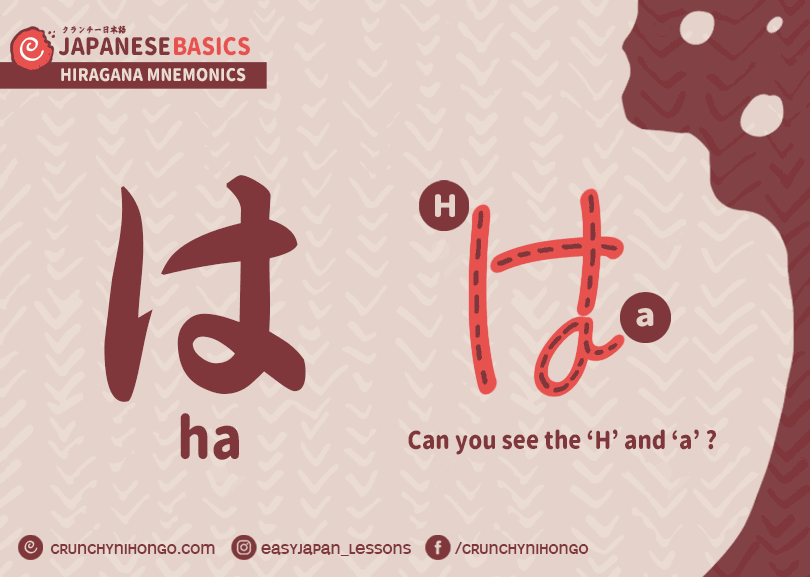
ひ [hi] – Hill in The Sunset

ふ [fu] – The Great Fuji Mountain
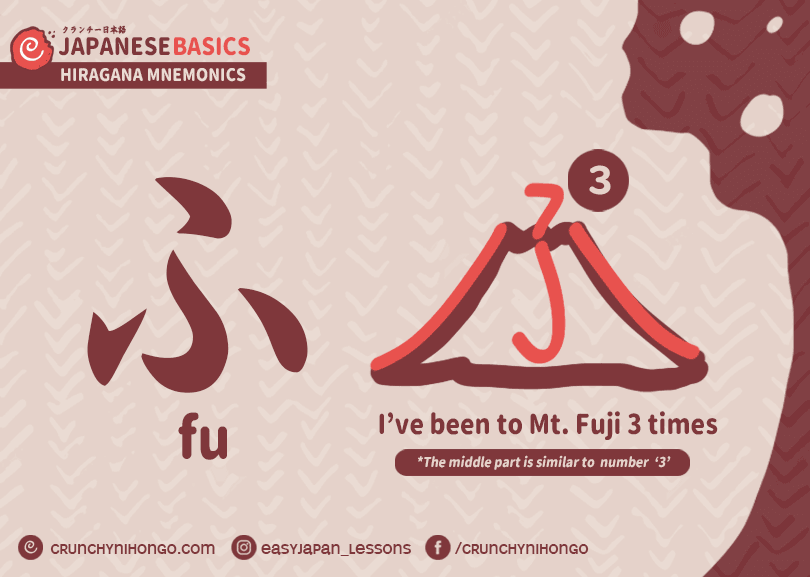
へ [he] – Some Weird Head
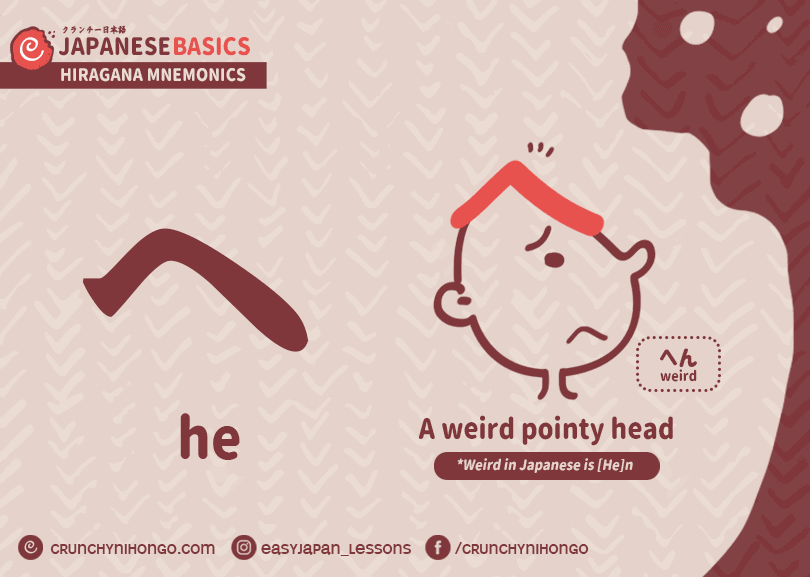
ほ [ho] – Ho’s Inception!
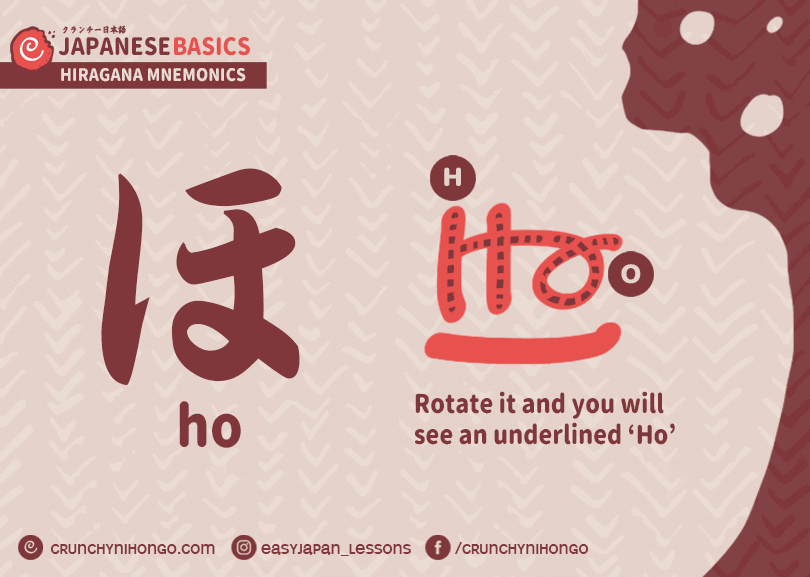
Navigation links:
Chart | Vowels | K Column | S Column | T Column | N Column | H Column | M Column |
R Column | Others
M Column [ma, mi, mu, me, mo]
M Column is as ordinary as N Column. Nothing to comment here!
Hiragana M Column Mnemonics
ま [ma] – Angry Mama
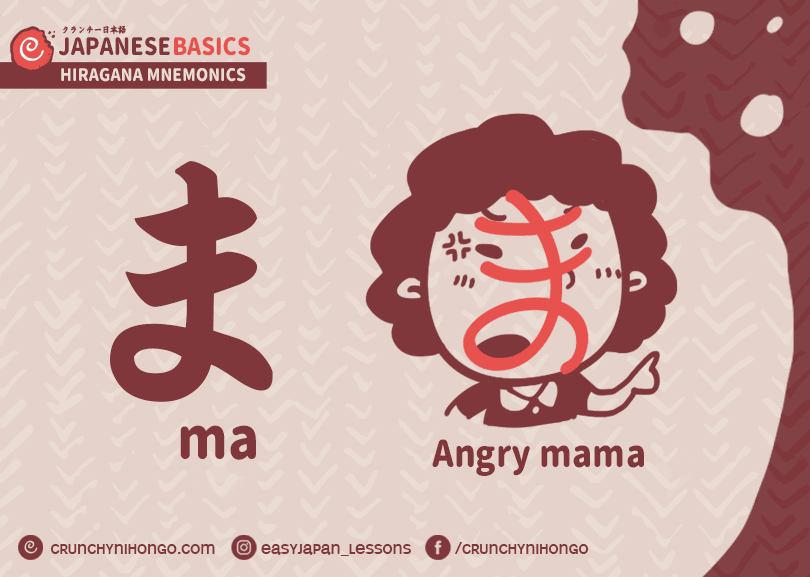
み [mi] – It’s Me!
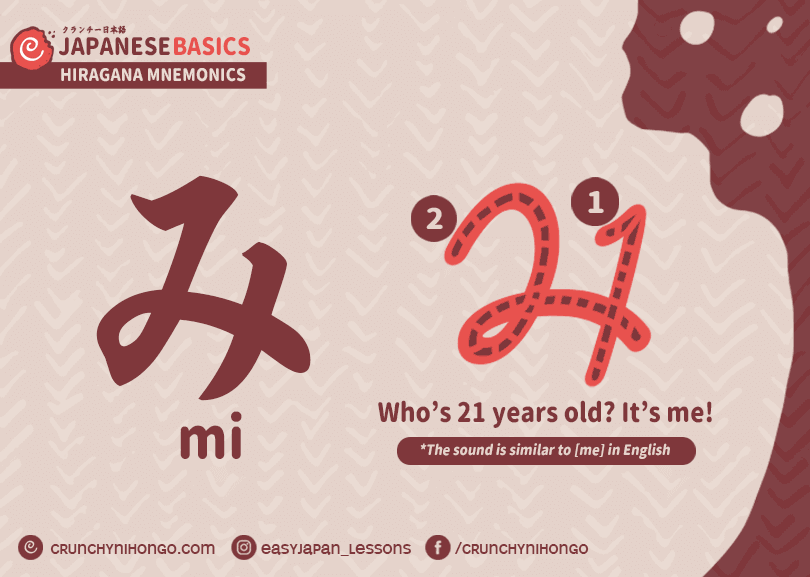
む [mu] – The Gentleman with A Moustache
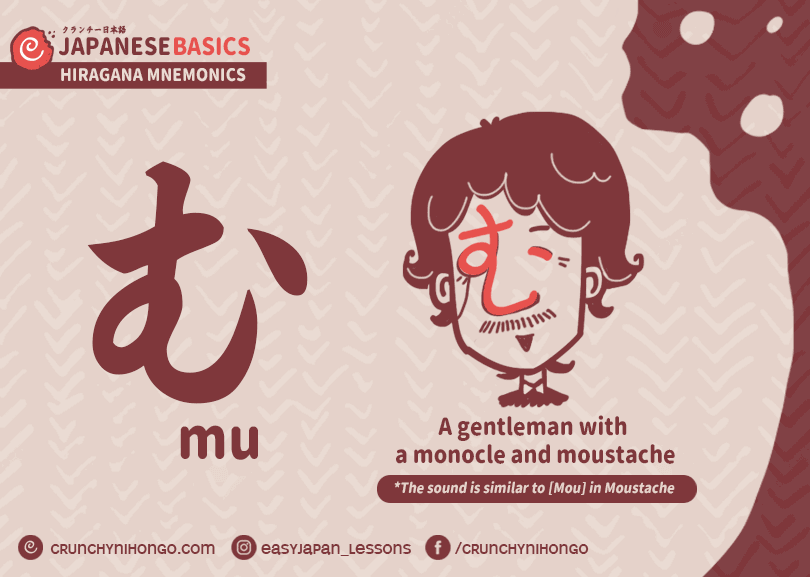
め [me] – What A Beautiful Eye
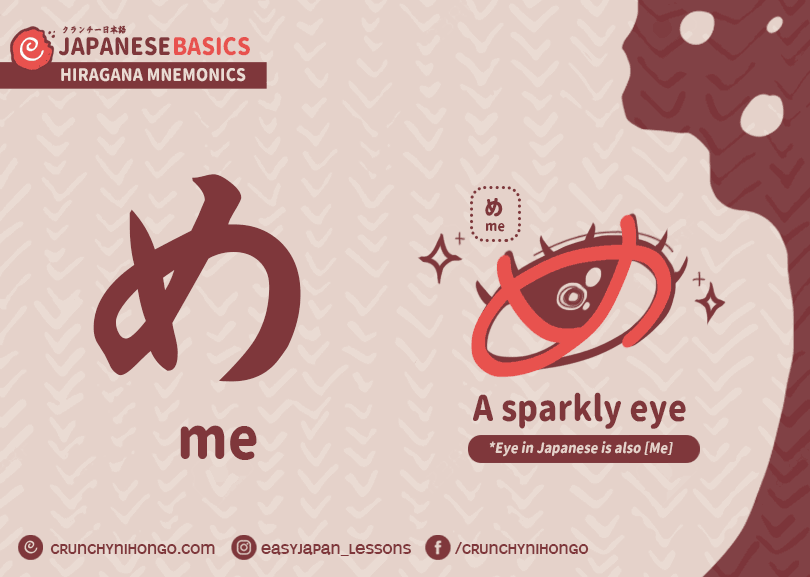
も [mo] – More Please!
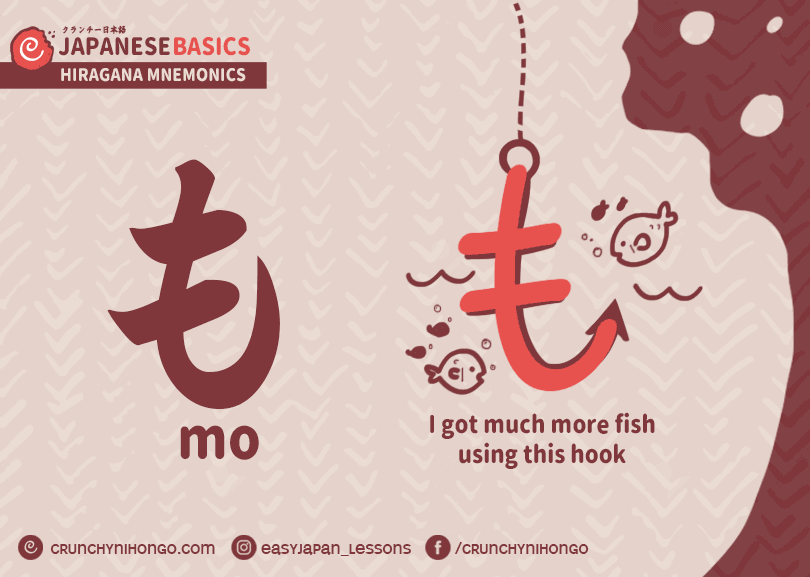
Navigation links:
Chart | Vowels | K Column | S Column | T Column | N Column | H Column | M Column |
R Column | Others
R Column [ra, ri, ru, re, ro]
R Column another simple column with no irregulars 😀
Hiragana R Column Mnemonics
ら [ra] – A Rabbit

り [ri] – A Ribbon
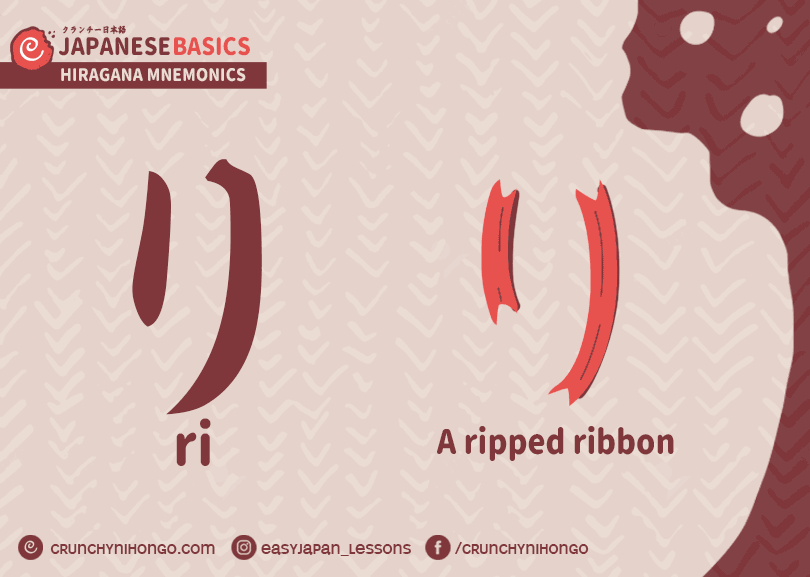
る [ru] – Rub, rub, rub~
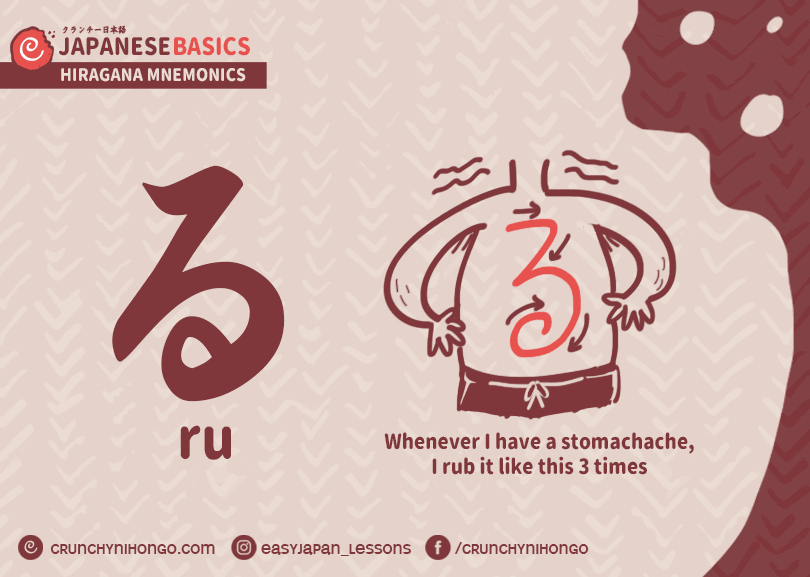
れ [re] – R for Red
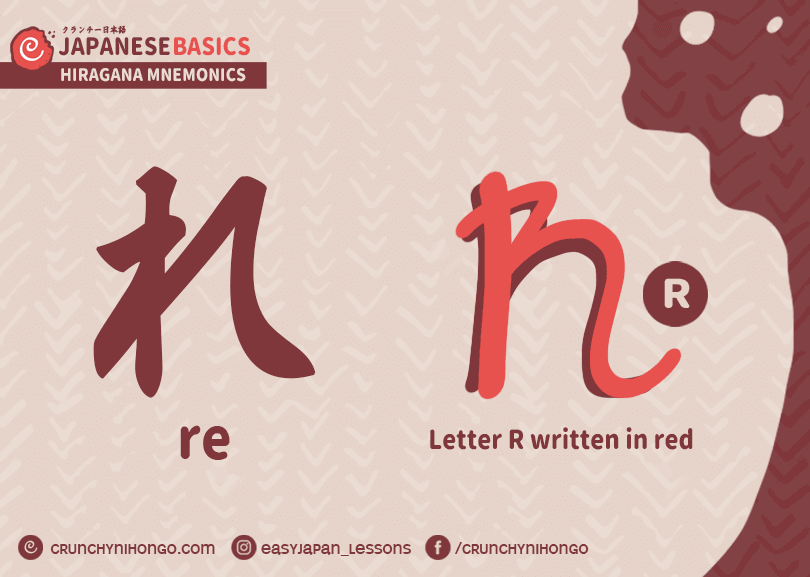
ろ [ro] – A Big Rock
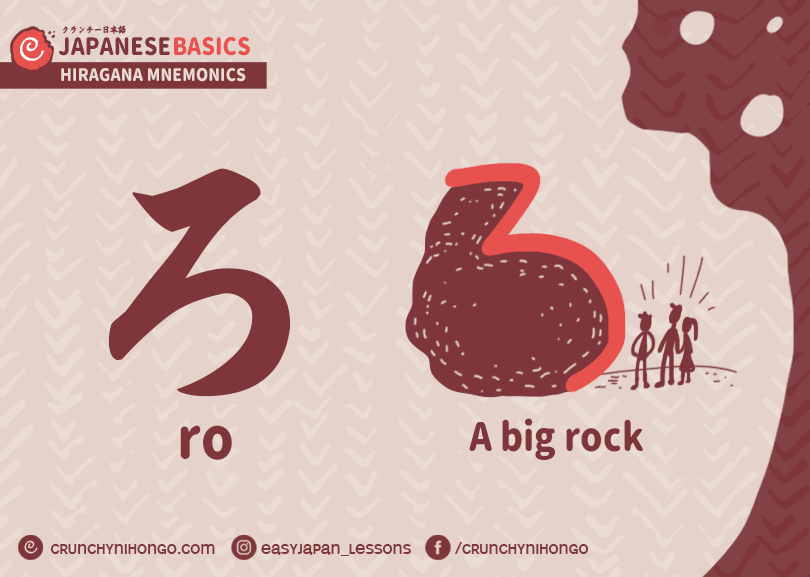
Navigation links:
Chart | Vowels | K Column | S Column | T Column | N Column | H Column | M Column |
R Column | Others
Others [ya, yu, yo, wa, wo, n]
These are the columns of Y, W, and N. But as you can see, they are a bit different than previous columns. For example, there are no yi and ye. And no wi, we and wu either.
Notes:
を [wo] is special. This characters here is always used as a particle to mark object which given action and is always read similarly as お [o].
Hiragana Y, W, N Columns Mnemonics
や [ya] – The Yawning Yak

ゆ [yu] – A Yummy Fish!
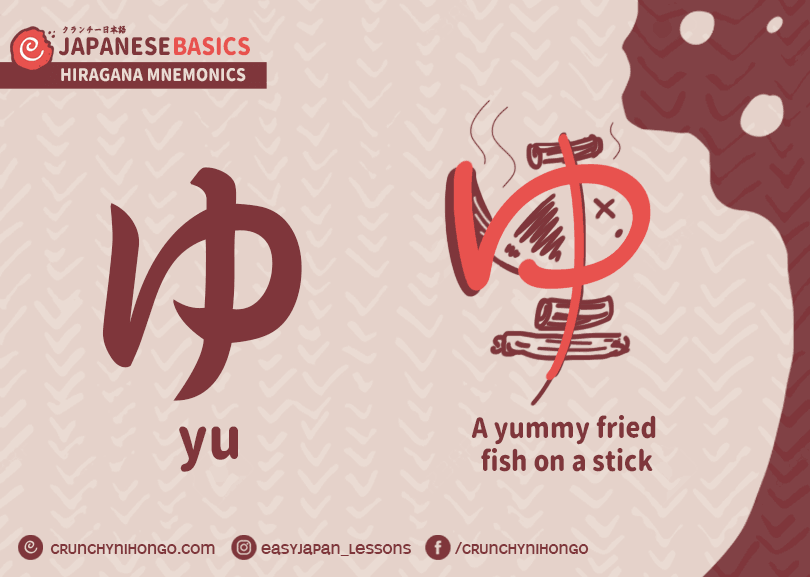
よ [yo] – Another Inception

わ [wa] – Water in The Belly

を [wo] – I’ve Won!

ん [n] – It’s A Letter “n”

Navigation links:
Chart | Vowels | K Column | S Column | T Column | N Column | H Column | M Column |
R Column | Others
Tips to Differentiate Similar Hiragana Characters
You might have noticed some very similar Hiragana characters and got confused sometimes. These tips might help you to easily differentiate each similar Hiragana characters!
Differentiate あ[a] and お[o]
The main difference is in the stroke!

Differentiate い[i] and り[ri]
The main difference is in the stroke!
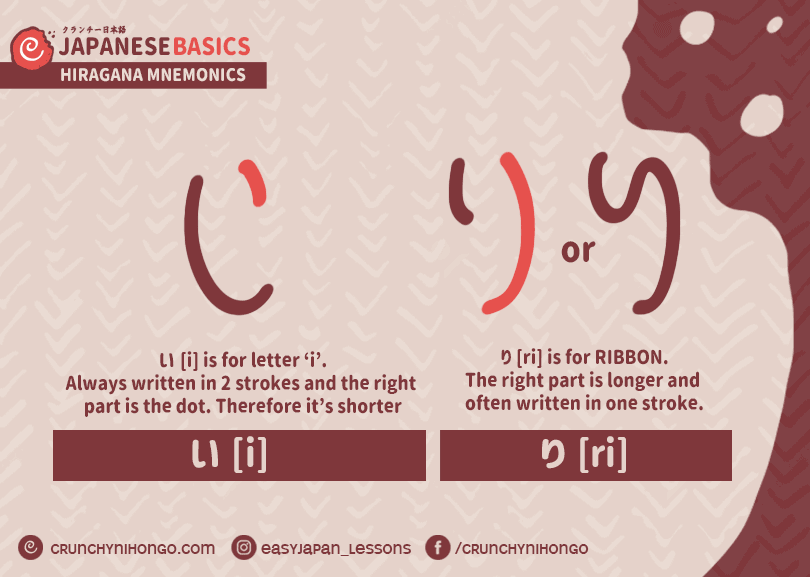
Differentiate め[me] and ぬ[nu]
The main difference is in the tail!
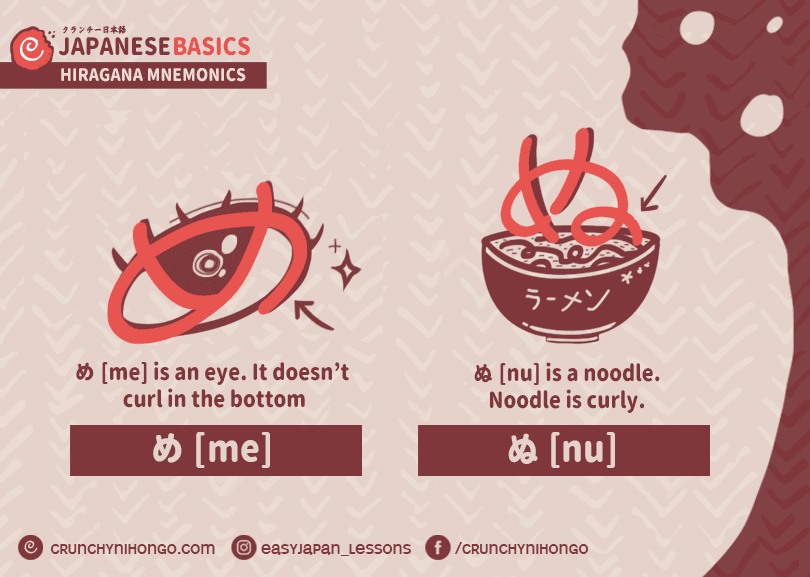
Differentiate れ[re] and ね[ne]
The main difference is in the tail!
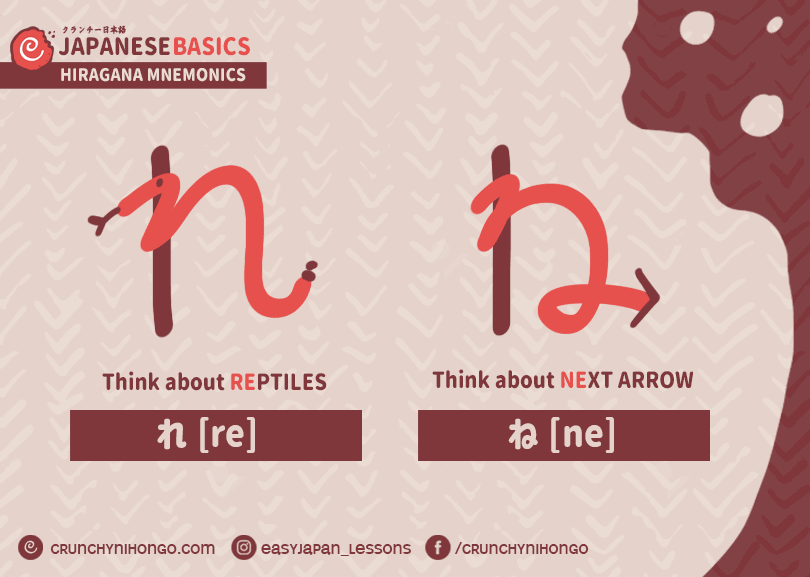
Differentiate ろ[ro] and る[ru]
The main difference is in the tail!

Differentiate さ[sa] and ち[chi]
If you focus to remember one of them, the other one is a breeze. ち[chi] might be easier to remember as it resembles the number ‘5’. Think about 5 oranges!

And we are done with part 1!
Get ready for part 2! But make sure you’ve remembered all the characters well before moving on. Don’t worry, there will be no new character for you to remember in part 2! ヾ(@°▽°@)ノ
What’s next?:
• Moving on to part 2!
• Try Hiragana Reading Practice!

please put a sentene
You can practice reading hiragana in another article here http://crunchynihongo.com/hiragana-reading-practice/ Hope it helps! 😀
hello I love this page! It´s very useful and creative, I want to become a member of this web, is there some way to become a member?
We’re so glad that you like this site! *big hug*. You could subscribe for new post by entering your email on the top right part. The part with this text here: “Get notified on our new lessons – Subscribe to our blog in just a few seconds~”.
Hello – your summary at the bottom is missing “yo”.
Thank you.
Your eyes are so keen! Thank you for reporting the error! *big hug*!
Do you have any practice like this for the g,p,b,d,and z rows?
Have you check our reading practice materials here? http://crunchynihongo.com/hiragana-reading-practice/
Hope it helps! 😀
The explanation are useful and creative, hardly to find any good material until stumble upon this page. Instantly suscribe :3
Thank you! Instantly thankful! ;3 tehee~
I am teaching myself Japanese and while the Duolingo app has been an incredible help I’ve been looking for something more visual. This is AWESOME! Is this information available to download or purchase as flashcards?
Currently you can only view it within this site. Sorry >_< We're thankful for your interest though 😀
Where is the R row? 🙁
Thank you for reporting! It has been fixed 😉
Soooo useful.. Was able to memorize everything in 1.5hrs because of this. Thanks!
That’s so great!!
Hello. Is your title for, “Ha,” incorrect? You have , “A hammer and a nail,” which was used with, “Na,” as “The hammer and a nail. Just wondering if it’s an oversight.
Thank you. This site is amazing!
Ah thank you for noticing the error. We’ll fix it very soon. Thanks again and happy learning! 😀
Beautiful guide, though the article is missing r row?
Fixed 😀
It’s not missing anymore! 😀
Thank you!!! That guide is amazing. It’s helping me to stick everything into memory so fast.
The whole site is amazing and very useful.
The R row is missing, could you fix it, please? I need those mnemonics 😀
We’ve fixed it! Thank you for letting us know~
Hello! This is such a creative way to teach Hiragana and will be able to help those looking to learn Japanese memorize these characters better. I stumbled upon these mnemonic devices and are using them on my powerpoints to help others learn Japanese. I hope this is okay.
Hi there! Please credit our site when using the image. Thank you
I definitely will, thank you so much!
Hello!
I believe your ra, ri, ru, re, ro, audio files actually say, “ma, mi, mu, me, mo.”
Fixed! Thank you for reporting 😉
Thanks for this. I was finding picking up anything beyond the most obvious really hard but using your system means I am actually (starting…very belatedly) to be able to read the characters.
Way to go ! We’re glad it helps! Keep on doing what you’re doing and you’ll be able to read much more easier! 😀
Aaaaa!! Thank you so much, this is very helpful!! Combo of this site “crunchynihongo” (for learning), and “realkana” (for practice) is just AWESOME! Ive learned it in about an hour! Arigatoo!!